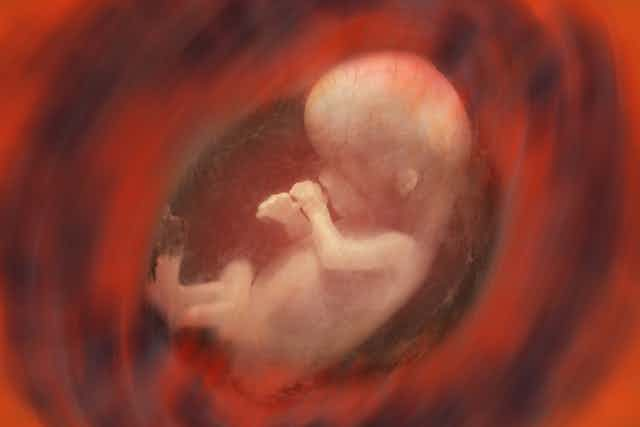In October 2014, a Swedish woman became the first person born without a womb to give birth. This was a major milestone for the 1.5 million women worldwide thought to be infertile because they have abnormal or damaged uteruses – or lack one entirely. Often this is caused by a genetic condition or cancer treatment, which can sometimes include surgically removing the womb.
Previously, the only motherhood possibilities for women facing “absolute uterine factor infertility” (AUFI) were adoption or the use of a surrogate carrier. But both these options may be unavailable to some women for religious, ethical or legal reasons, and neither allow them to undergo a pregnancy and give birth to their own genetic offspring.
But work by our team in Gothenburg and others has created a new option that for the first time could allow these women to experience genetic, gestational and legal motherhood. We’ve already helped four patients to give birth to healthy babies, while another has an ongoing pregnancy.
How do womb transplants work?
Before any transplant could take place, we needed to know that the couples trying to conceive were fertile. This involved creating and preserving at least ten embryos per couple in the lab using in vitro fertilisation, just as would happen if a woman with a healthy womb wanted to undergo the IVF process.
We then needed donor wombs. In our work, the donors were the patients’ mothers (five cases), close relatives (three cases) or, in one case, a family friend, all of whom were between 37 and 62 years of age. In each instance, the entire uterus including its arteries and veins was removed in a complicated procedure that took over ten hours by expert gynaecological surgeons, vascular surgeons and urologists.
Next, the recipients underwent a transplantation procedure that lasted four to five hours and included the creation of vascular and vaginal connections as well as fixation of the womb. Our donors and recipients then spent around a week in hospital recovering. But the recipients also needed to take drugs to suppress their immune systems so that they didn’t reject the new wombs. The dose of drugs was reduced after several months if no problems occurred, but extra medication was needed if the body did try to reject the uterus.

After six months, seven of our nine patients still had transplanted wombs in good condition and these women experienced regular menstrual periods from one to two months after transplantation. Sadly, the other two wombs had to be surgically removed because of complications.
One year after transplantation, we were able to start transferring the embryos to the wombs. Two patients got pregnant at their first embryo attempt, the first of which led to a birth by cesarean section several weeks early after the monther experienced the pregnancy condition preeclampsia. The baby had normal weight for the gestation period (1.8 kg) and is today a healthy one-year-old boy.
After successfully giving birth, the mothers should be able to become pregnant again after another IVF cycle. But the wombs will eventually be removed so that they can stop taking the immunosuppression drugs.
What are the downsides?
Womb transplantation does carry surgical risks for the donor and recipient because of the long, complicated nature of the procedures, which are also expensive. But the risk could be minimised using robotic assisted laparoscopic (keyhole) surgery. The need for immunosuppression can also have adverse effects on the mother and foetus because it reduces the ability of the immune system to ward off infections, although this process is constantly being refined and developed.
The risk of rejection means the patients need to be carefully monitored through repeated cervical biopsies. And we need to take repeated culture samples from the patient’s vagina to detect any infections in the early stage and provide prompt antibiotic treatment.
Because of the small number of successful operations that have taken place so far, all in one centre, we only have limited information about the risks and possibilities of womb transplant. We will have a better estimate of the true results of the process when it is introduced in more locations and the collective results are published.
One thing that may make the procedure more widely available is the use of wombs taken from people when they die rather than living donors. However, we don’t yet know if this is possible.

